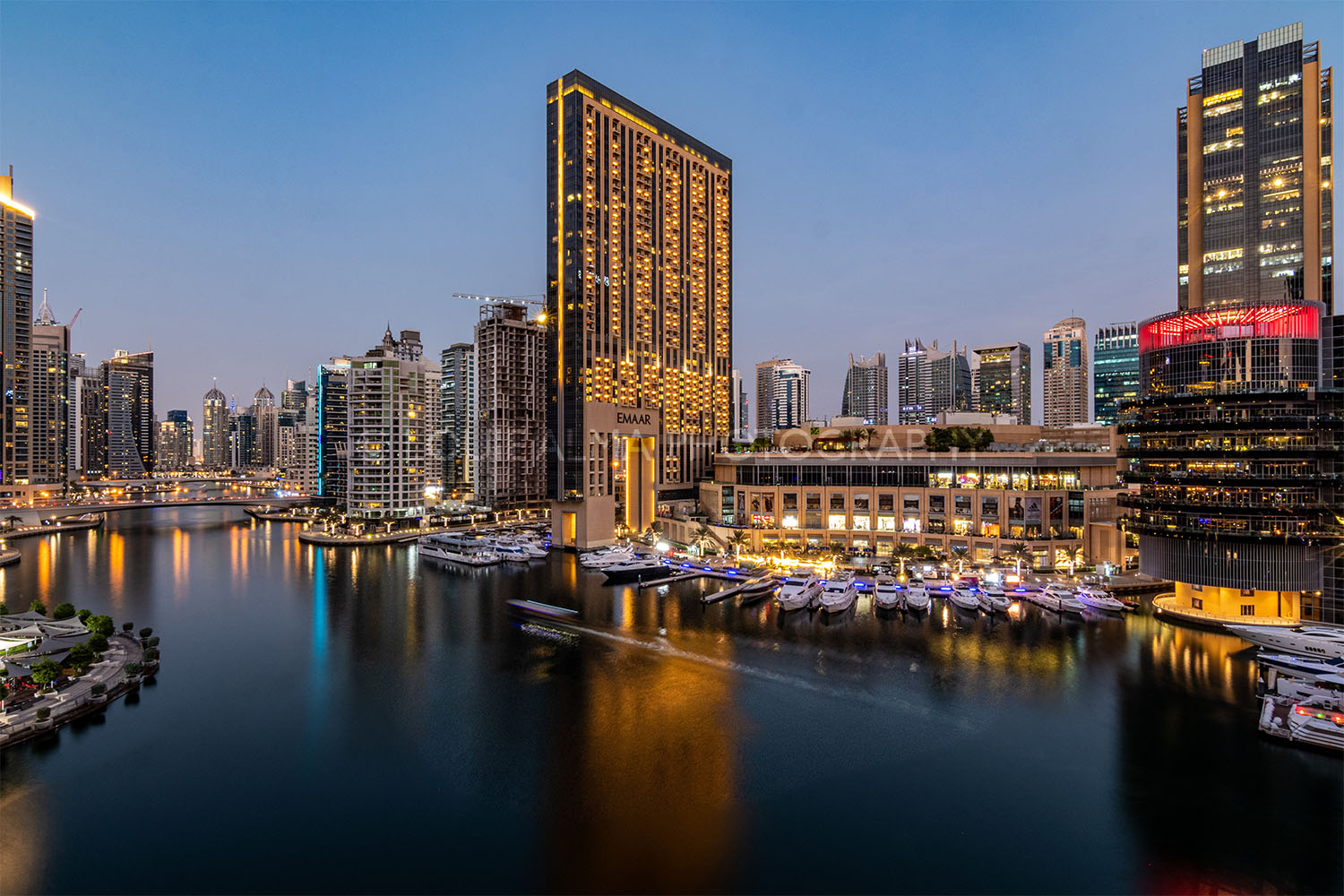It’s easy to see why this White Company seagrass Christmas tree skirt is a bestseller, but I’ve tracked down a stunning £16 alternative at Habitat
Nature Photos That Pop: Use LR’s Color Contrast Tools (VIDEO)
Here’s another eye-opening tutorial from German landscape specialist Christian Mohrle whose popular YouTube channel is full of shooting and editing videos designed for photographers of all skill levels. Today’s episode explains how to employ Lightroom’s Color Contrast tools to transform flat, dull scenes into images that simply can’t be ignored.
Mohrle has been shooting since 2009 and has the advantage of living near beautiful Lake Constance in the south of his country. Like all of his straightforward lessons, this one outlines a step-by-step process with clear illustrations so that you understand how to put color contrast to work. We encourage you to download his sample Raw file with a link beneath the video.
He strongly recommends that you begin all important edits with whatever basic, global adjustments are necessary to properly prepare the original shot for the transformational masking and color grading magic that follows. As you can see, the photo is super dark, even though it was captured at a high ISO setting.
Thus, significant noise can be expected to intrude when lightening the darkest portions of the frame, therefore the first step is opening Lightroom’s Details panel and clicking on Denoise. He then begins recovering lost detail by expanding the Basic panel and changing the profile from Adobe Color to Adobe Landscape which immediately improves shadows and provides a boost in base saturation.
Mohrle also increases exposure, shadows, and blacks to further balance out the divergent tones. Other preliminary enhancements include dropping highlights while raising the whites for more “punch,” and fixing an unwanted green cast. He also introduces a bit of texture and dehaze, while cutting clarity to achieve the soft, dreamy look he desires.
It’s now finally time to enhance color and boost color contrast, and Mohrle explains his reasoning like this: “The top portion of this image is rather cold due to the overcast sky, and that’s how it should be.” On the other hand, the warmer tones scattered throughout the foreground need to be accentuated to create compelling color contrast between the top and bottom areas in the scene.
Mohrle demonstrates the masks he recommends, along with the appropriate color-grading modifications. The lesson concludes with careful sharpening and a focus-stacking technique. Once you’re done watching head over to the Phlog Photography YouTube channel for more enlightening landscape photography videos.
REVIEW Wacom One 14: Ideal Gift For Any Creative
Wacom, the brand that artists, graphics professionals and photographers everywhere rely on, just introduced the Wacom One 14. It’s full of features and fun, and it’s amazingly affordable. But don’t let the budget price fool you; there’s a mountain of horsepower behind the 14-inch screen.

If cost has been the major thing preventing you from enjoying the excitement of editing photos, drawings and other artwork directly on the image using a stylus and Pen Display (a/k/a Graphics Tablet) instead of using a mouse, wait no more. The Wacom One 14 is priced at $299 and is perfect for beginners, students and photography enthusiasts.
Overview & First Impressions
It took less than 15 minutes for me to set up the Wacom One 14 sample I borrowed. Plug the USB-C cable into a Mac or PC, download the driver, set up an account, and then you’re off to the races.
If you use a Mac you may have to tweak the Privacy settings, and of course you must adjust the Display settings to allow the Wacom One 14 to mirror your computer’s content. Once configured, those additional steps never have to be repeated.
The stroke of the Standard Pen (digital stylus) feels natural and intuitive, and the 4,096 levels of pressure provide outstanding control. The pen is wireless and requires no battery, and it has two customizable switches that can summon your favorite shortcuts.

I did have one problem: it took me much longer than usual to write this review. Every time I picked up the tablet, I had so much fun I just kept editing, and drawing, and goofing around. For the image above I applied Adobe’s Firefly engine to a crop of the pigeon shot and then played with it like a kitten chasing a laser pointer. But it’s okay—who needs sleep, anyway?

In the Box
• Wacom One 14 Pen Display
• Wacom One Standard Pen
• 3 x Replacement Nibs
• Nib Removal Tool
• USB-C cable – 6-foot (1.8m)
• Quick Start Guide & Important Info Page
Also included: Access to an assortment of trial and/or short-term versions of several software packages—including Clip Studio Paint Pro, Magma (Blaze plan), Concepts and Foxit software, plus Skillshare training courses—to get you started (device registration required).

REVIEW: Wacom Intuos Pro Graphics Drawing Tablet
Revitalize Your Image Editing Now With a Wacom One On-Screen Interactive Graphics Tablet
Wacom One 13 Touch — A New World of Image Editing

Compatibility & System Requirements
The Wacom One 14 is compatible with PC (Windows 10 or later), Mac (OS 13 or later) and Chromebook. USB-C port (or adapter) required. And of course, you already have the internet connection that’s needed to download the drivers.
Check Wacom support for display mode device compatibility. Users can download available drivers here.

Performance Evaluation
The 14-inch screen seems spacious compared to the 13-inch screen found on the Wacom One 13. Despite additional canvas size, the One 14 does not hog desk space, and measures 7.9 x 13.2 x 0.4 inches (201 x 336 x 10mm).
As mentioned, set up was a snap and the learning curve zero. I used the Wacom One 14 with Photoshop exclusively and was operating at full speed in no time. The two buttons on the Standard Pen are programmable so you can customize them to meet your needs. While editing with the pen, I still used my Mac’s keyboard because of my long-resident habits and predilection for shortcuts.
As luck had it, I was restoring a very old and mildly damaged photo for a friend. Compared to using a mouse, the pen made it immensely easier to clean up dust spots and scratches. It was fun, too, and I’ve never thought of dust removal as fun.
In short, although the Wacom One 14 doesn’t have all of the advanced features found on tablets that cost four to five times as much, I didn’t miss them while editing a number of images in Photoshop. The unit is responsive, easy to use and fun.

Conclusion
If you’ve never used a pen display and edited photos directly on the image itself using a stylus instead of a mouse, you don’t know what you’ve missed. At the entry-level price of $299, the Wacom One 14 is easy to recommend wholeheartedly.
Price & Availability
You can order the Wacom One 14 from Amazon today for $299. Alternatively, you can order directly from Wacom. Special holiday pricing may be in effect, so act fast if you intend to.
Visit the official Wacom Store on Amazon where you’ll also see the Wacom One 13 Touch which we reviewed a short time ago and other products including the exciting Wacom Movink.
—Jon Sienkiewicz
(As an Amazon Associate, Shutterbug earns from qualifying purchases linked in this story.)
Advertisement
Subscribe to Our Newsletter
Popular Posts
Pages
- 360 Interactive Virtual Tour Sample
- About the Photographer
- Business Portrait Photography
- Concert Photography
- Event Photography
- Fashion Photography
- Food Photography
- Landscape Photography
- Portrait Photography
- Product Photography
- Real Estate Photography
- Sport Photography
- Still Photography
- Street Photography
- Travel Photography
- Videography


















